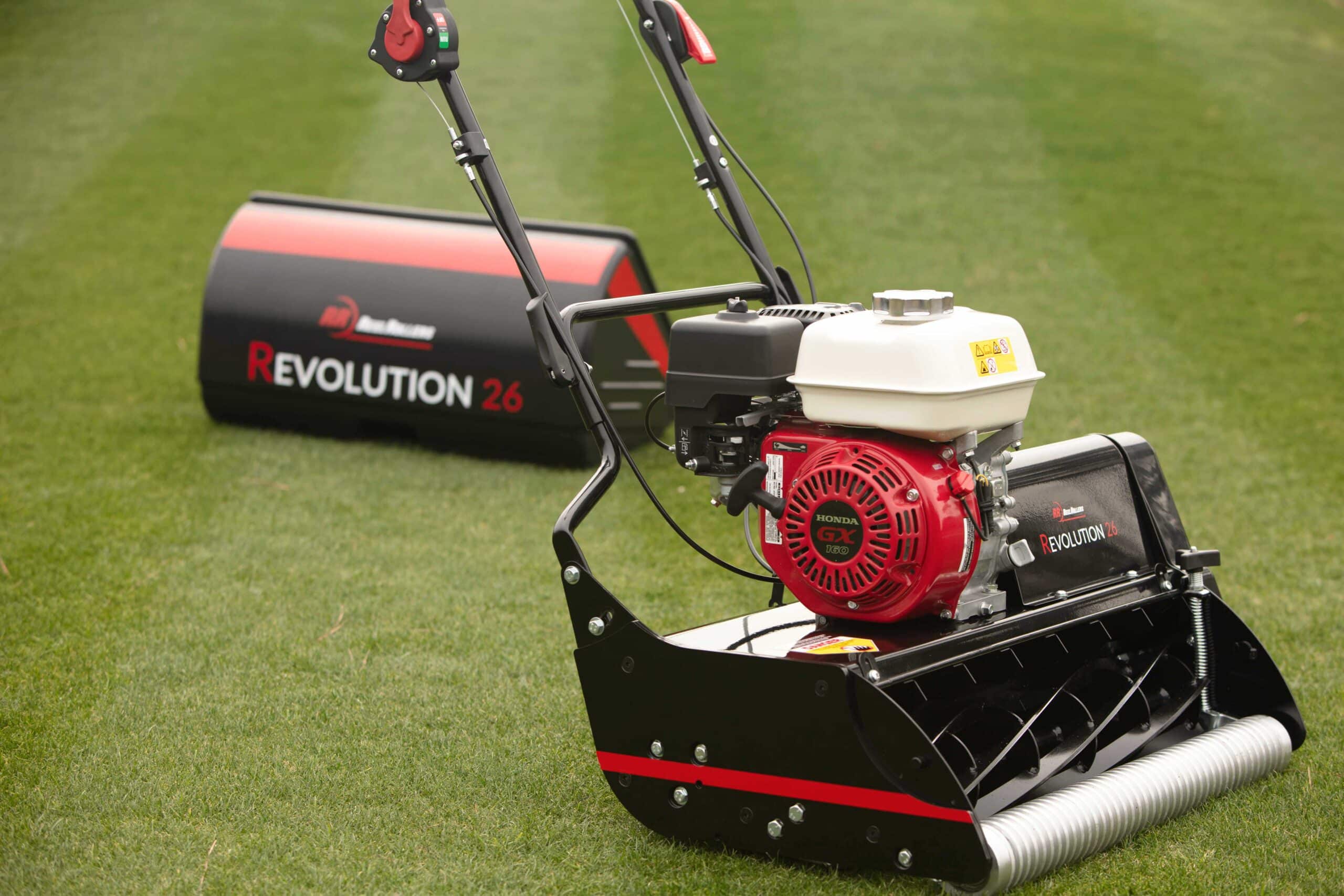Gas-powered reel mowers are mechanical lawn maintenance tools that use a series of rotating blades to cut grass. Unlike traditional rotary mowers, reel mowers provide a cleaner, scissor-like cut, promoting healthier turf.
Now, why choose reel mowing over the old rotary method? Simple. If you’re aiming for that lawn so smooth it’d make a putting green jealous, you need a reel mower in your arsenal. We’re talking precision cutting below one inch. That means healthier grass, fewer bugs, and less chance of those pesky diseases taking hold.
Ever wanted your lawn to look like a professional sports field? With a reel mower, you can achieve those envy-inducing stripes that scream, “Yep, I’m the king of the block.” It’s all thanks to the reel mower, working its magic to give your lawn that professional finish. And by giving your lawn a clean, even cut, reel mowing encourages stronger, more robust growth.
Trust us, once you go reel, you’ll never look back.
Importance of Proper Grass-Cutting Techniques
Grass Health
Reel mowers use a scissor-like cutting action. This clean-cutting technique results in a much healthier lawn because the recovery from mowing is minimized so the plant can focus on growth, not recovery after each mow.
Reduced Disease and Pest Infestation
A clean cut minimizes the risk of disease transmission and reduces the likelihood of insect infestation. By avoiding jagged edges and torn grass, you create an environment where the grass can heal faster and remain more resistant to pests and diseases.
Enhanced Aesthetics
Proper grass-cutting techniques contribute to the aesthetic appeal of your lawn. powered reel mowers are excellent tools for creating beautifully defined stripes and lower cut lawns, thanks to their front rollers and rear drums, which stabilize the mower even when your turf isn’t perfectly smooth. The lower clean cut creates a manicured appearance that enhances the overall curb appeal of your property.
Encourages Even Growth
Consistent mowing at the right height encourages even growth across your lawn. powered reel mowers allow you to achieve a uniform cutting height, ensuring that all areas of the lawn receive equal treatment. The result? A lush, dense turf that’s the envy of the neighborhood.
Promotes Root Development
Proper grass-cutting techniques aren’t just about what’s above ground; they’re about what’s happening below the surface, too. By keeping that cutting height in check, you’re encouraging those roots to dive deep, which is essential for absorbing water and nutrients from the soil, as well as anchoring your lawn and making it resilient against whatever Mother Nature throws its way.
Training Your Lawn for Low Mowing
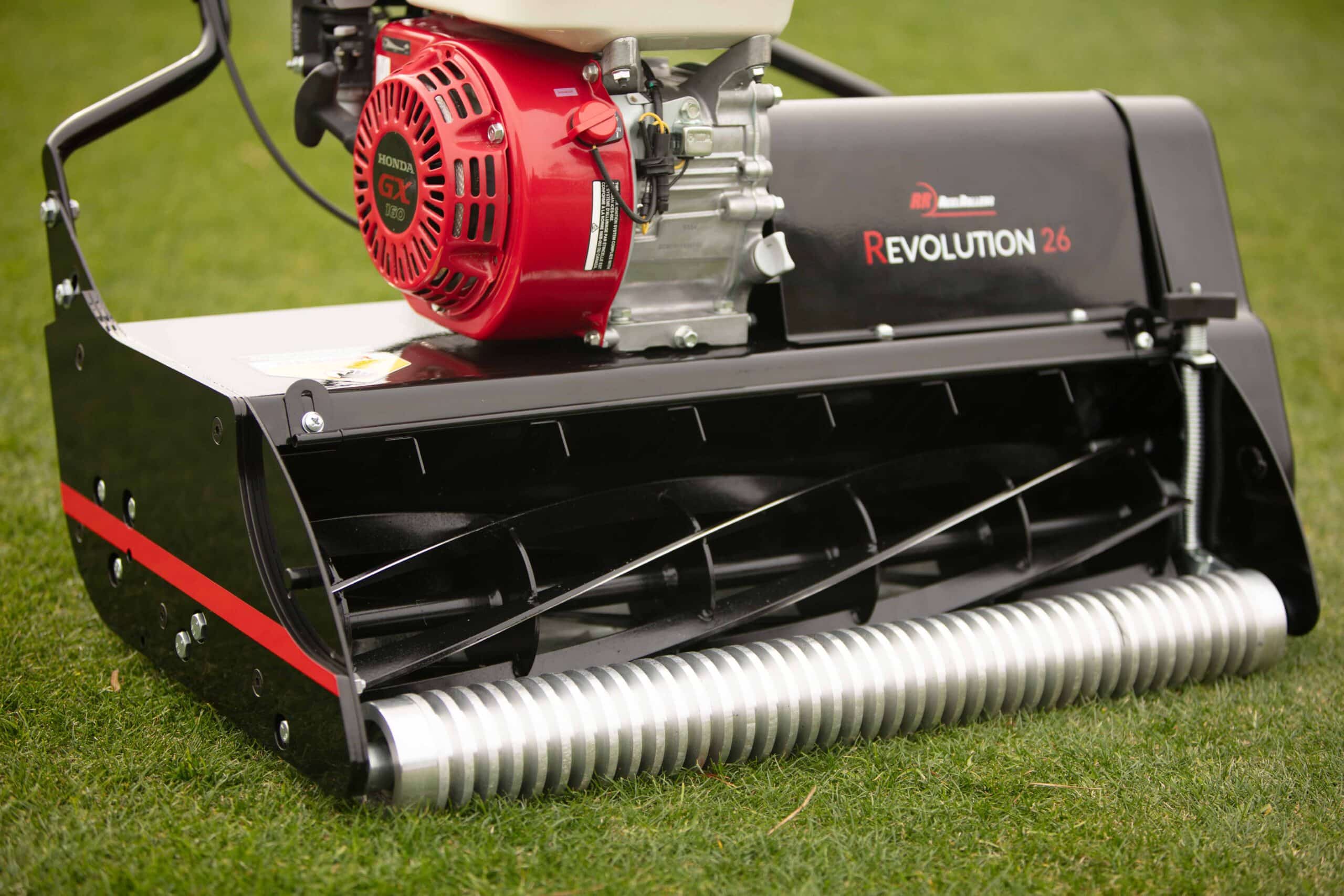
Training your lawn for low mowing can be implemented in two different ways. For some, you can take a systematic approach of gradually acclimating the grass to shorter cutting heights. This technique will result in less of a brown scalped appearance, but can also take several weeks to accomplish your goal height. For others, the most common approach is to bring your lawn down all in the same day by taking ½” of grass off with each pass. Although the grass will look brown during the growing season, it will recover in a week with a thicker, more lush lawn. Remember, always bring your grass down ¼” – ½” lower than where you plan to maintain it when training the lawn.
The One-Third Rule
One key principle of a healthy lawn is to mow frequently. The one-third rule is quite simple — never chop off more than one-third of the grass blade’s length in a single mow or you will remove most of the green lush appearance that comes from the grass blades… Consistent mowing is the key to a great-looking lawn.
Observation and Monitoring
Throughout the process of training your lawn for low mowing, it’s essential to closely monitor the grass’s response to each height adjustment. Healthy growth, vibrant color, and a dense canopy are positive indicators that the grass is adapting well to the lower-cutting regime. But if you start seeing signs of stress — browning, thinning, you name it — it’s time to hit the brakes and reassess your approach.
Adaptation Period
Keep in mind that training your lawn for low mowing is not an overnight transformation. It requires time for the grass to acclimate to the new cutting height and develop the necessary strength and resilience to thrive under these conditions.
Frequent Mowing Schedule
Consistency is paramount when it comes to training your lawn for low mowing. For optimal results, you’ll want to create a mowing schedule as well-oiled as your mower based on the growth rate of your specific grass type. Aim to mow your lawn at regular intervals — some folk mow every day during the growing season, but at least twice a week should ensure that the grass never exceeds a certain height. This approach prevents shock to the grass and encourages a gradual acclimation to lower mowing heights over time.
Seasonal Considerations
During the growing season, which is usually the spring and summer months, your grass is in overdrive, growing faster than a speeding bullet. But come winter, it’s time to take it easy, dialing back the mowing frequency to match the slower growth rates. It’s all about working with Mother Nature, not against her. By aligning your mowing schedule with seasonal changes, you can effectively manage grass growth and promote a healthy, well-manicured lawn year-round.
Grass Type Specifics
Different grass species and varieties have varying growth rates and maintenance requirements. Whether you have cool-season grasses like Kentucky bluegrass and fescue or warm-season varieties such as Bermuda grass and Zoysia grass, it’s essential to tailor your mowing schedule to suit the specific needs of your grass type.
Use this infographic as a general guide to the ideal height for your lawn. But remember, the one-third rule trumps everything else. That’s right — even these specific mowing height recommendations take a back seat to this golden rule. So, even if you’re aiming for a putting green, stay within that one-third threshold for each mow. Your lawn will be at the perfect height and looking awesome before you know it.
Adequate Watering and Fertilization
It goes without saying that your lawn needs proper hydration and nutrient supply to maintain its health, especially during the transition to lower mowing heights. Deep watering and regular fertilization promote robust root growth and resilience against stress.
Techniques for Even and Smooth Mowing
Achieving even and smooth mowing results is essential for maintaining a well-manicured lawn. Proper mowing techniques not only enhance the appearance of the grass but also promote its health and resilience. Here are some techniques for achieving even and smooth mowing using a reel mower:
- Overlap each mowing pass: Emphasize the importance of overlapping each mowing pass to ensure consistent coverage and avoid leaving uncut strips of grass. Gas-powered reel mowers, with their precision cutting capabilities, allow you to achieve uniform cutting across the entire lawn. Overlapping each pass by about one to two inches ensures that no areas are missed, resulting in a clean and even cut.
- Maintain a straight mowing line: Keeping a steady and straight mowing line is crucial for achieving uniform coverage and minimizing the risk of scalping or damaging the grass. Reel mowers offer excellent maneuverability, allowing you to maintain a straight path while mowing. Focus on a fixed point in the distance and mow parallel to it, using it as a guide to keep your mowing path straight. Avoid making sudden turns or changes in direction, as this can lead to irregular cutting and result in visible patterns on the lawn.
- Controlled mowing speed: Controlling your mowing speed is essential for achieving even and smooth results. Mowing too quickly can result in uneven cutting and scalping, while mowing too slowly may cause the grass to bend rather than be cleanly cut. Aim for a moderate mowing speed that allows the mower blades to effectively trim the grass without causing damage or leaving behind uneven patches. Pay attention to the condition of the grass and adjust your speed accordingly, especially when mowing over areas with thicker or taller grass.
- Inspect and sharpen mower blades: Regular inspection and sharpening of mower blades are essential for achieving a clean and even cut. Reel mowers come equipped with sharp blades that slice through the grass with minimal resistance, resulting in a smooth and uniform cut. However, over time, blades may become dull due to normal wear and tear. Inspect your mower blades regularly and sharpen them as needed to maintain optimal cutting performance. Sharp blades ensure that the grass is cleanly cut, promoting healthier growth and reducing the risk of damage or disease.
Adjusting Cutting Height Settings
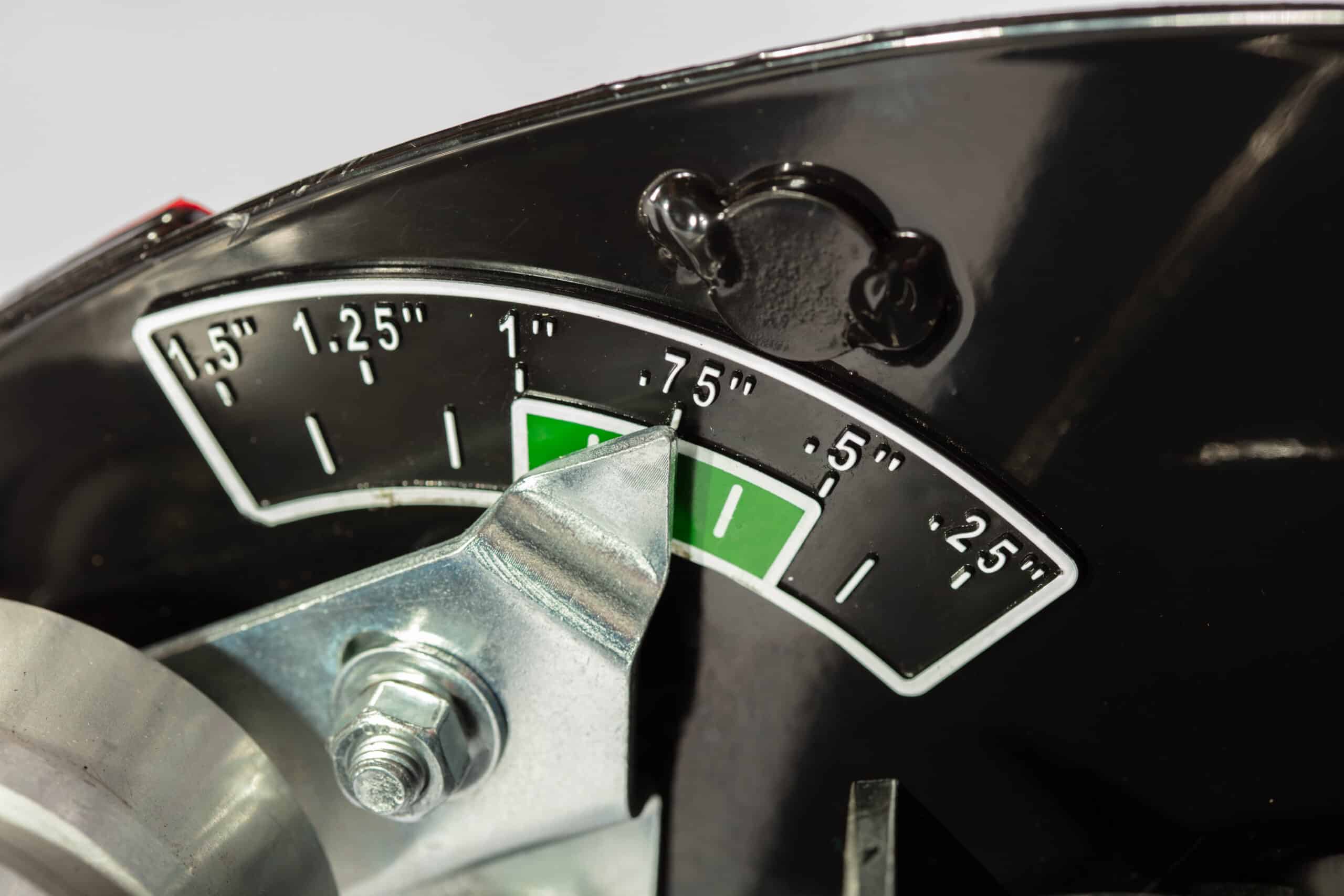
Adjusting the cutting height on a reel mower is more simple than you might think. Here’s how you do it:
- Locate the adjustment mechanism: Look for the cutting height adjustment mechanism on your reel mower. It’s typically located near the wheels or handles, depending on the model.
- Check for adjustment options: Some reel mowers have a single adjustment lever or knob that allows you to change the cutting height for all wheels simultaneously. Others may have individual height adjustment mechanisms for each wheel.
- Choose your cutting height: Determine the desired cutting height for your lawn. Reel mowers usually offer multiple height settings to accommodate different grass lengths and preferences.
- Test and fine-tune: After making the adjustment, give your reel mower a test run on a small section of your lawn. Check the cutting height to ensure it meets your expectations. If necessary, fine-tune the adjustment until you achieve the desired cutting height across your entire lawn.
Using a Reel Mower on Uneven Terrain
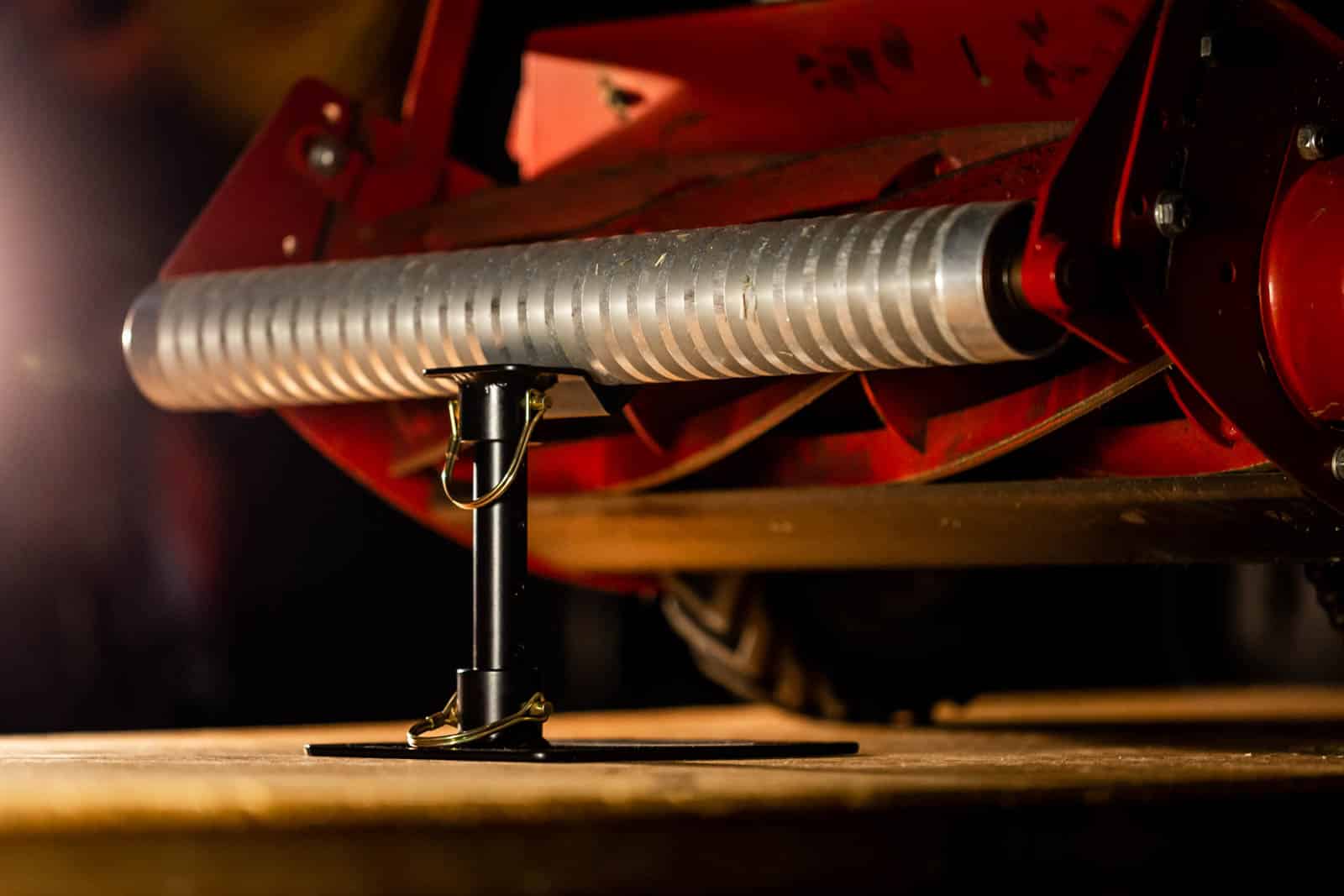
Replacing the castor wheels that are usually fitted as standard on your reel mower with a front roller is a total game-changer when it comes to keeping the cutting height uniform, especially on uneven terrain. Here’s how:
- Consistent pressure distribution: A front roller applies constant downward pressure across the width of the reel, ensuring uniform contact between the blades and the grass. This consistent pressure distribution helps maintain a steady cutting height, regardless of the variations in the terrain.
- Reduced bouncing and floating: When mowing over uneven terrain, traditional castor wheels can bounce or float, causing fluctuations in the cutting height as the mower moves across the lawn. A front roller acts as a stabilizing force, minimizing bouncing and keeping the reel mower level. This stability contributes to a more uniform and consistent cut.
- Prevents scalping: Uneven terrain often results in certain areas of the lawn being lower or higher than others. Castor wheels may inadvertently lower the cutting height in high spots, leading to scalping, while failing to reach the grass in low spots, resulting in uneven cuts. In contrast, a front roller maintains a steady height adjustment, preventing scalping on high spots and ensuring the mower effectively cuts grass in low spots.
- Improved maneuverability: Front rollers have a much wider surface area (most reel mowers are between 20 and 27 inches wide, and the front roller spans the width of the front of the mower) compared to castor wheels, providing better traction and stability on uneven terrain. This enhanced maneuverability allows the mower to navigate bumps, dips, and slopes more smoothly, reducing the likelihood of uneven cuts caused by wheel slippage or loss of traction.
Mowing Patterns: Achieving a Manicured Lawn
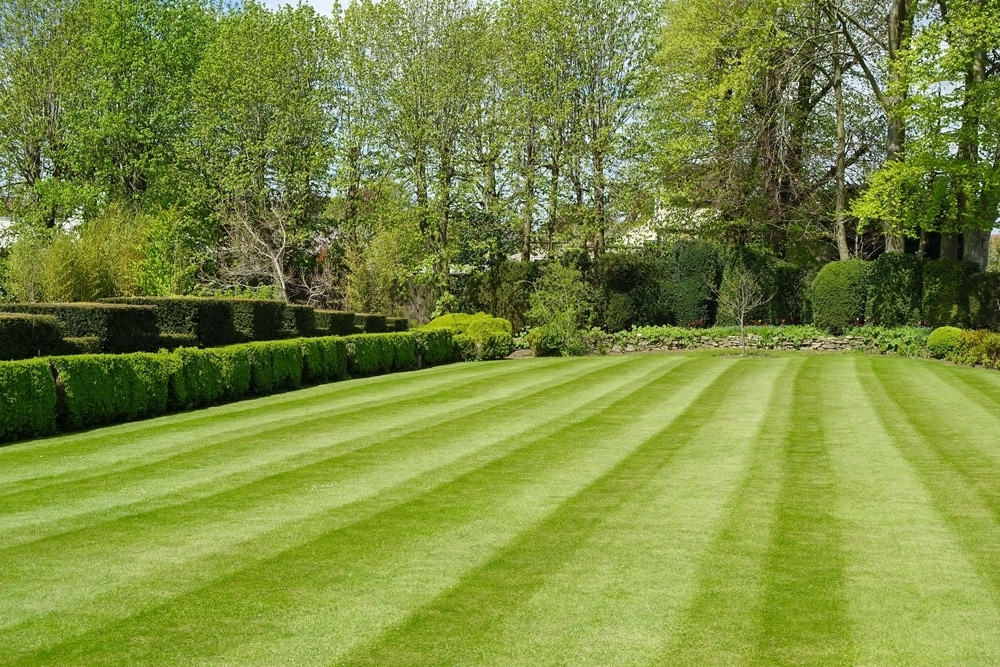
Mastering mowing patterns is crucial to achieving a manicured lawn. Varying mowing patterns enhance the lawn’s visual appeal and contribute to its overall health and vitality.
By avoiding repetitive mowing in the same direction, you can prevent issues such as ruts and burn-in, which occur when grass is repeatedly subjected to the same cutting pattern. Instead, alternating between different mowing patterns — such as lengthwise, diagonally, or in a checkerboard fashion — promotes even growth and a uniform appearance across the lawn. This practice ensures that no area of the lawn is overexposed to stress and encourages healthier grass growth.
Mowing on Slopes with a Reel Mower: Special Considerations
Mowing slopes with a reel mower presents unique challenges due to the mower’s weight distribution and cutting mechanism. Mowing lengthwise on slopes can lead to uneven cutting, as the mower’s weight may cause it to dig into the grass on downward slopes and ride over the grass on upward slopes.
To achieve a more balanced cut, we recommend fitting a front roller to your mower and mowing diagonally across slopes. This technique distributes the mower’s weight more evenly and reduces the risk of scalping or uneven cutting. Additionally, creating a border along the edge of the slope with a trim pass can facilitate smoother turns and prevent damage to the lawn.
Time to Get Reel
Gas-powered reel mowers offer precision cutting and promote healthier turf compared to traditional mowers. By employing proper grass-cutting techniques, training the lawn for low mowing, and maintaining a frequent mowing schedule, homeowners can achieve a lush, well-manicured lawn while minimizing environmental impact.

